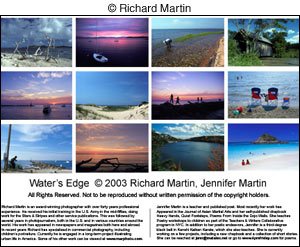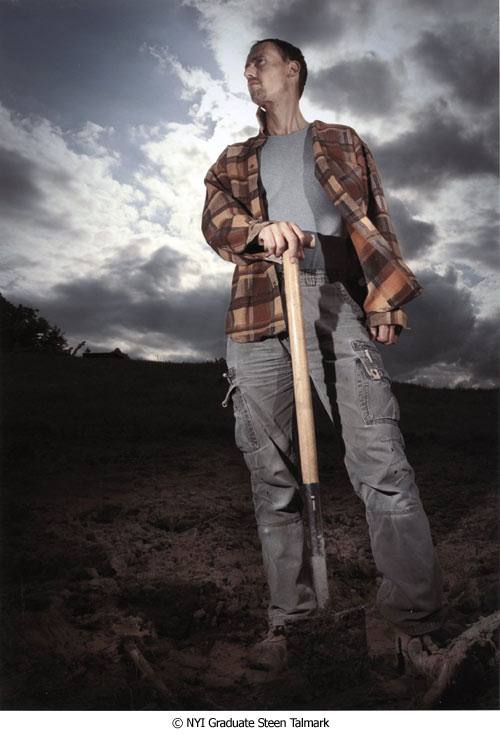Photo by NYIP Photography School Student Douglas Russell

Color photography, not surprisingly, has always been about the color and the most effective examples are those in which color is a critically important element. Some of the photos I see might have been done just as well in black & white and are color only because either that's the kind of film in the camera, or in the case of digital, the camera was simply set at the default RGB mode. Occasionally, we view images that would have been BETTER if they had been rendered in black & white. But not here.
Hot air balloon photos have always attracted me because the compositions often consist of broad expanses of bright color. Hot air balloons can provide an attractive focal point and spruce up any landscape shot. Of course, they are also a great platform for shooting aerials, though you can't really steer them. But even on the ground, as here in this photo made by NYIP Student Douglas Russell, they are quite a dramatic splash of color.
What is the subject of this image? Here we actually see the canopy or envelope of several balloons. I'm no expert but it's my guess that these are being inflated prior to launch, probably early in the morning. We don't see the propane burners, the baskets that carry the passengers, nor any of the people involved but I'm sure they are all there, just outside the frame. But the photographer chose to focus on just the colorful envelopes. Does that make it more difficult to identify the subject? Well, does anyone think these are NOT hot air balloons?
How did the photographer focus attention on the subject? In our Complete Course in Professional Photography we teach our students a number of compositional principles that accomplish exactly that. Two of these are Placement and Large Size, meaning put your subject up front and off-center and make it large. Do we always want to do that when composing a shot? Of course not but it works very well in this instance.
What about simplifying the image? Is there anything we might exclude, any element that doesn't belong? No, I don't think so. Perhaps the photographer might have zoomed in and excluded most the sky and foreground, as I illustrate with this crop. But frankly I believe the result is a more cramped look and the image loses its sense of place. The location of the original is obviously some rural spot (hot air balloons are usually launched in rural-type settings) and we don't see that in the cropped version. Also, it's less certain what the subject is. It could be almost anything.
I like this photo very much but I want to comment on two factors that really enhance it — the color and the light. These two elements are related. Most photographers know that midday is the worst time to take photos, mainly because the colors are often dull and the detail flat. Not in this image. The colors are warm and stand out and the texture of the nylon envelopes is quite visible. The color is also accentuated by the contrast with the dark, cool north sky in the background. We can even see individual blades of grass in the foreground and that's largely due to the low position of the sun.

I think it's a fun exercise to view any colorful image in grayscale, just to see if it would work as a black & white photo. So I did a simple conversion in Photoshop, as you can see here. Not bad and the tonal values in the original are largely preserved. But hot air balloons are COLOR subjects. In black & white the warmth of the original is simply not there.
There are two reasons this image appeals to me. One, it illustrates color photography at its best, with perfect light and with the color clearly defining the subject. That's not to say color photos must always show bright primary hues. Not at all. I'm a bit of a minimalist myself and sometimes strive to use color that way. But this subject cries out for a bolder treatment and that's exactly what we see here.
I also like the fact that the photographer chose to treat this subject a little differently. Most hot air balloon photos are shot while they are aloft and a bunch of them sailing together can certainly look very dramatic, whether photographed from the ground or from the air. Douglas Russell sort of took a different path and I congratulate him on his vision. Well done!






